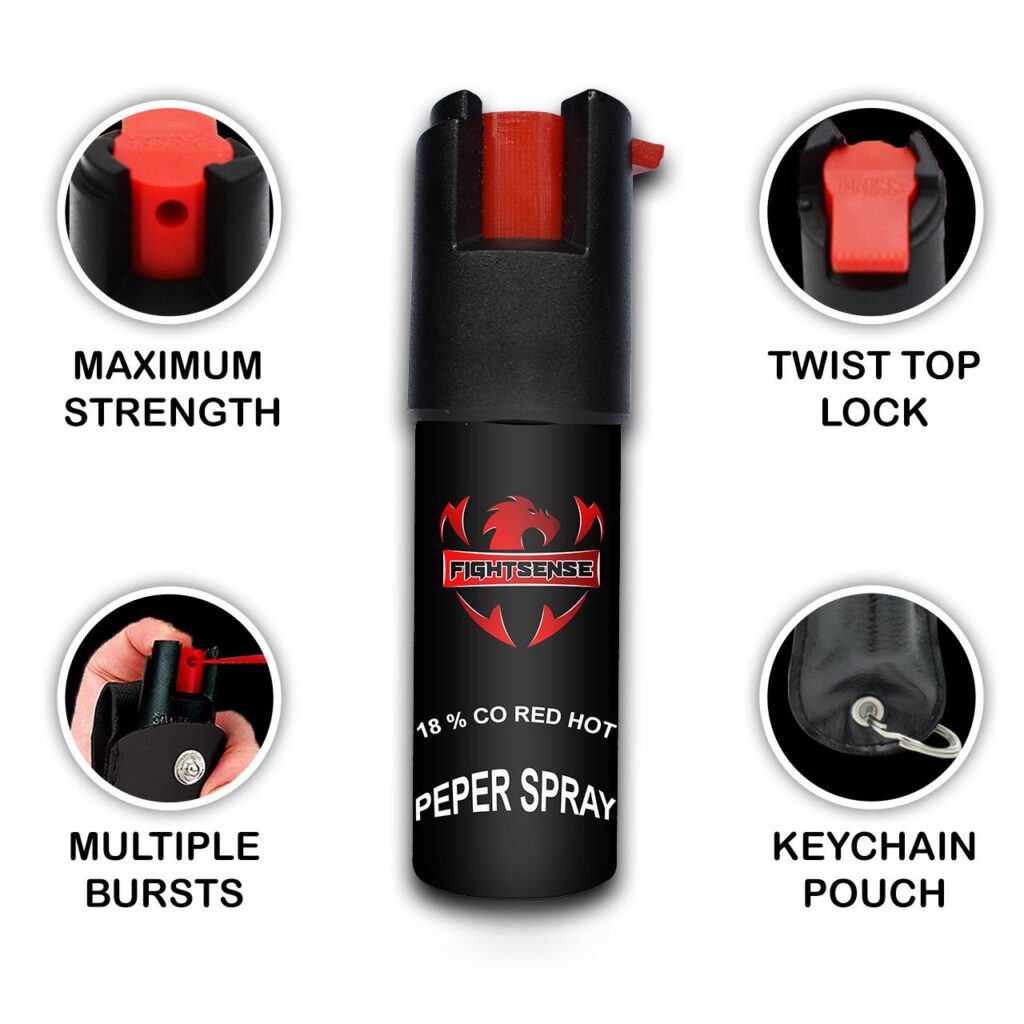Table of Contents
- The Origins and Early Uses of Pepper Spray in Personal Protection
- Technological Advancements Shaping Modern Pepper Spray Formulations
- Legal Regulations and Safety Considerations for Responsible Use
- Choosing the Right Pepper Spray for Effective Self-Defense: Expert Recommendations
- The Conclusion
The Origins and Early Uses of Pepper Spray in Personal Protection
In the mid-20th century, the concept of using chemical agents for personal protection began to crystallize, culminating in the development of pepper spray as a non-lethal self-defense tool. Early formulations were derived from the active compounds found in chili peppers, specifically capsaicin, which provided a potent irritant effect without causing permanent harm. Law enforcement agencies quickly recognized the utility of this spray as a less-lethal alternative to firearms and batons, allowing officers to subdue suspects effectively while minimizing serious injury. The initial deployment primarily targeted crowd control and riot situations, offering an accessible means of incapacitating aggressors with minimal risk.
Beyond its law enforcement origins, pepper spray soon found a foothold in civilian self-defense markets during the 1980s and 1990s. Its appeal was amplified by several key advantages:
- Quick deployment: Enables users to react rapidly in threatening encounters.
- Portable design: Compact canisters easily carried in pockets or bags.
- Non-lethal deterrent: Provides an effective barrier without lasting damage.
This early adoption period laid the groundwork for modern formulations and widespread acceptance, marking a significant shift towards empowering individuals with practical, user-friendly self-defense options.
Technological Advancements Shaping Modern Pepper Spray Formulations
Over the past few decades, pepper spray formulations have undergone significant innovation, driven by advancements in chemical engineering and material science. Modern pepper sprays no longer rely solely on basic irritants; instead, they use refined oleoresin capsicum (OC) extracts that offer enhanced potency while reducing unwanted side effects such as excessive skin burns. Additionally, breakthroughs in aerosol technology have led to more efficient delivery systems that provide a consistent spray pattern and longer range, maximizing accuracy for self-defense users. These improvements ensure quicker incapacitation of assailants with minimal risk, catering to both civilian and law enforcement needs.
Beyond the chemical composition, the integration of smart technology is shaping the future of self-defense sprays. Some innovative products now feature GPS tracking, built-in alarms, and wireless alerts that can notify emergency contacts instantly when activated. The use of eco-friendly propellants and biodegradable packaging also reflects a growing commitment to sustainability within the industry. Key features transforming modern pepper spray include:
- Enhanced OC concentrations for maximum effectiveness.
- Improved delivery mechanisms such as fog and gel sprays for versatile applications.
- Compact, ergonomic designs for ease of carry and quick access.
- Smart technology integration providing real-time safety alerts.
- Environmentally responsible materials reducing carbon footprint.
Legal Regulations and Safety Considerations for Responsible Use
When integrating pepper spray into personal safety routines, it’s essential to understand the diverse legal frameworks that govern its possession and use across different regions. Many jurisdictions impose strict regulations on the concentration levels of OC (oleoresin capsicum) and specify the circumstances under which discharge is legally justified. Some areas require permits or restrict sales to specific age groups, while others prohibit carrying pepper spray in certain public spaces such as airports or government buildings. Awareness of these rules not only ensures compliance but also protects users from potential legal liabilities.
Beyond legality, responsible handling of pepper spray demands a strong commitment to safety protocols to minimize risks. Proper storage-away from children and heat sources-is crucial, as is understanding how to operate the device effectively under stress. Training courses often emphasize de-escalation techniques and situational awareness as complementary to physical deterrents. Remember, this tool is designed to incapacitate temporarily, not to cause permanent harm, making respect for its power a key principle in everyday use.
- Verify local laws before purchase or transport.
- Store securely to prevent accidental discharge.
- Practice with inert trainers to ensure proper handling.
- Use only in legitimate self-defense situations.
Choosing the Right Pepper Spray for Effective Self-Defense: Expert Recommendations
When selecting a pepper spray for self-defense, it’s crucial to consider the type of spray delivery mechanism. Stream sprays offer precise targeting with minimal blowback, ideal for confined spaces. Fog sprays cover a wider area but may risk affecting the user if wind conditions are unfavorable. Gel and foam formulas provide better accuracy and longer reach, reducing the risk of cross-contamination during a defense situation. Experts advise testing the spray’s effective range and spray pattern under realistic conditions to ensure it matches your personal safety needs.
Beyond spray type, pay close attention to factors such as size, ease of use, and legal restrictions. Compact models fit conveniently on keychains or belts, facilitating quick access, while larger units may offer more charges but at the expense of portability. Consider features like safety locks and ergonomic grips to prevent accidental discharge. Additionally, familiarize yourself with local regulations concerning pepper spray possession and potency, as laws vary widely and can impact the legality of certain formulations. Investing in a product that balances power with usability will provide confidence and reliable protection when it matters most.
The Conclusion
In conclusion, the evolution of pepper spray reflects a broader journey in personal safety-one that balances effectiveness with responsibility. From its early formulations to today’s advanced, user-friendly designs, pepper spray has become an essential tool in self-defense, empowering individuals to protect themselves with confidence. As technology and regulations continue to shape its use, staying informed and practicing safe handling will ensure that pepper spray remains a reliable, non-lethal option for personal security in the years to come.Check Our Other Blogs
- StunGun – Your Trusted Source for Stun Guns, Laws, and Self-Defense Tips
- PepperSprayLaws – Your Trusted Resource for Pepper Spray Information
- StunGunLaws – Your Trusted Guide to Stun Gun Legality and Safety




